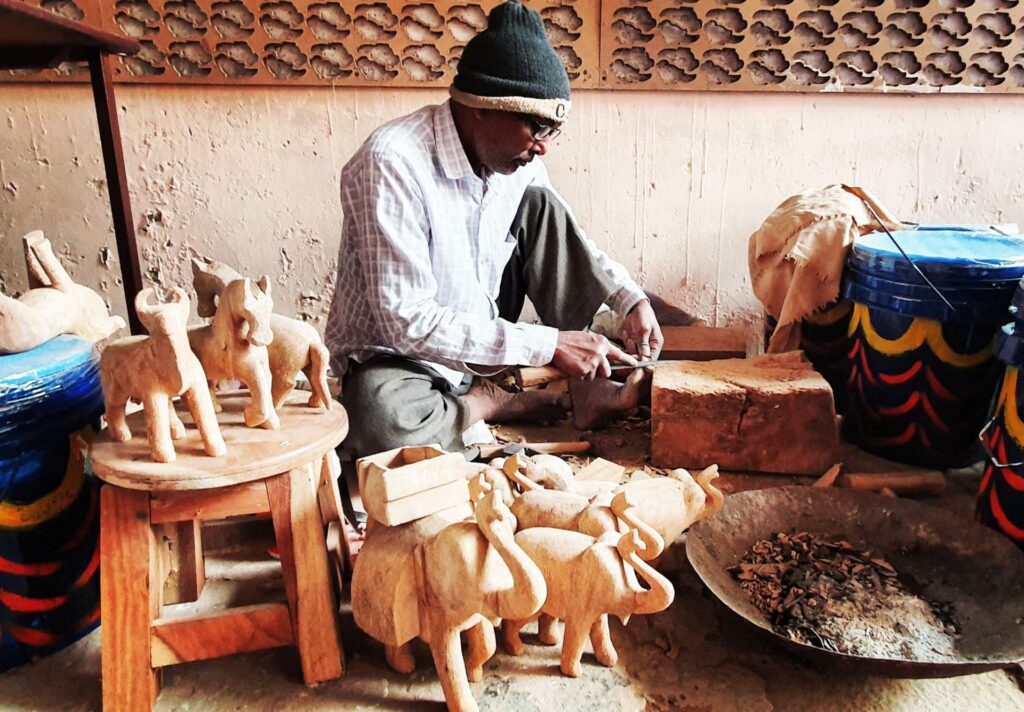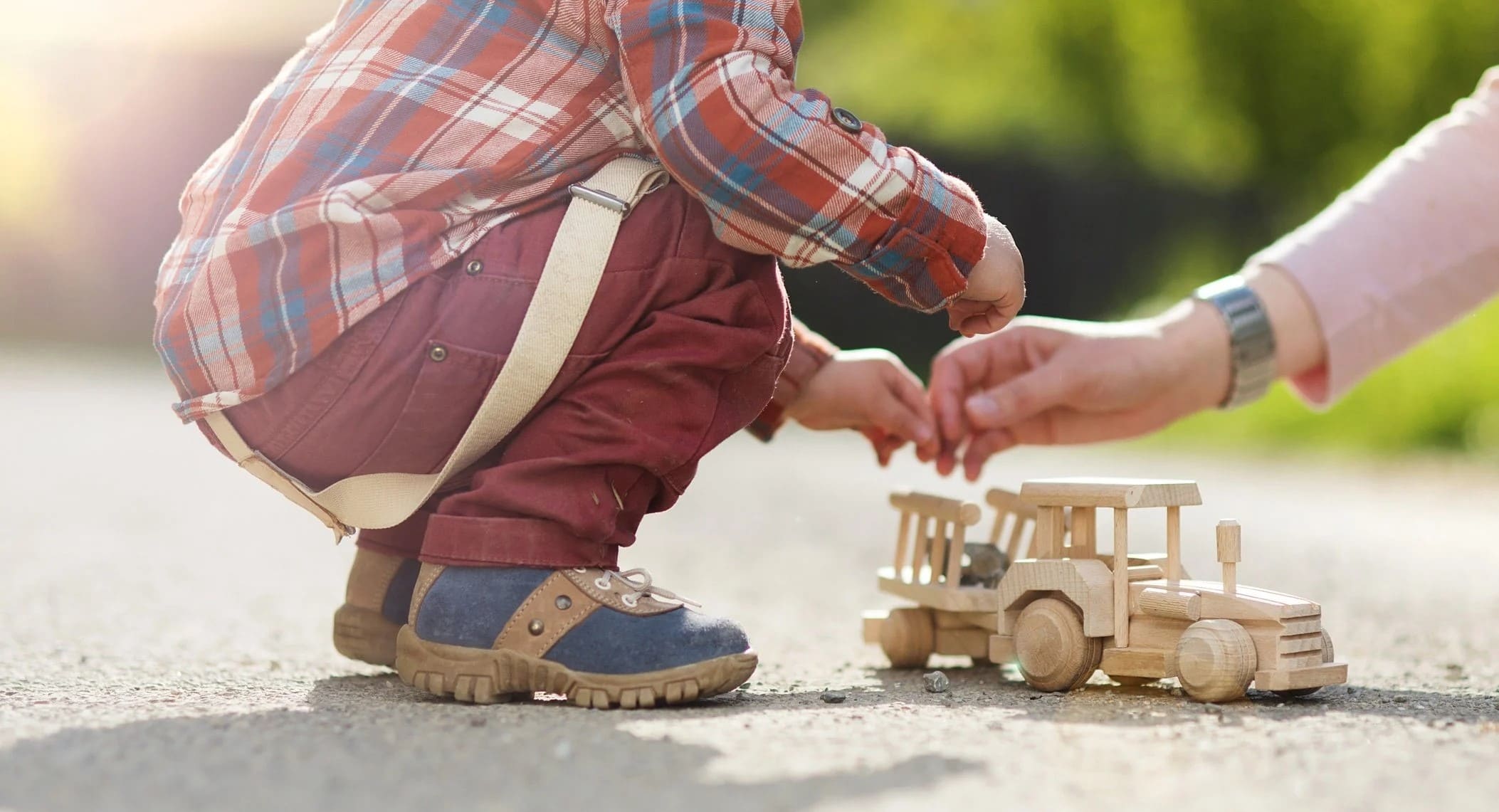India’s wooden toys exports are carving a niche in the global market, blending traditional craftsmanship with modern sustainability. As parents worldwide shift toward eco-friendly, non-toxic toys, India’s handcrafted wooden toys are gaining attention for their quality, cultural significance, and environmental benefits. Valued at approximately $152.34 million in 2023-24, India’s toy exports, including wooden toys, reflect a growing yet underutilized opportunity. This article explores the current state of India’s wooden toys exports, the market trends driving demand, and actionable steps for Indian manufacturers to tap into this silent goldmine.
Table of Contents
ToggleThe Global Demand for Wooden Toys
The global demand for wooden toys market is on a steady rise, valued at $25.7 billion in 2022 and projected to reach $35.0 billion by 2031, with a compound annual growth rate (CAGR) of 3.6% (Transparency Market Research). This growth is fueled by increasing consumer awareness of the environmental and health risks associated with plastic toys. Parents in developed markets like Europe, the United States, and Japan are prioritizing sustainable toys made from natural, biodegradable materials. Wooden toys, known for being non-toxic, durable, and safe, align perfectly with this trend, making them a preferred choice for eco-conscious consumers.
India’s Position in the Wooden Toys Export Market

India ranks as the third-largest exporter of wooden toys globally, following China (69,204 shipments) and Vietnam (15,579 shipments), with 10,796 shipments as of March 2025 (Volza Export Data). In 2023-24, India’s toy exports, including wooden toys, reached $152.34 million, a marginal decline from $153.89 million the previous year (Economic Times). Despite this dip, the sector has shown growth over the years, rising from $129.6 million in FY2020 to $177 million in FY2022.
Key exporting hubs include:
Channapatna, Karnataka: Famous for its vibrant, handcrafted wooden toys, often called “Channapatna toys.”
Varanasi and Saharanpur, Uttar Pradesh: Known for intricate designs and traditional craftsmanship.
Kondapalli, Andhra Pradesh: Renowned for its unique wooden figurines and toys.
These regions produce toys that combine cultural heritage with modern appeal, exported primarily to Vietnam, the United States, and the United Arab Emirates.
Government Initiatives and Support
The Indian government is actively promoting the toy industry to boost exports and reduce import dependency. Key initiatives include:
Manufacturing Clusters: Uttar Pradesh has allocated 100 acres in Greater Noida for a toy manufacturing hub, while Karnataka has designated 400 acres of SEZ land in Koppal for a toy cluster (IBEF).
Incentives for Exporters: The Ministry of Commerce, through the Director General of Foreign Trade (DGFT), offers incentives to start-ups and entrepreneurs to enhance manufacturing and exports.
Quality Control Orders: Mandatory standards ensure that Indian toys meet international safety requirements, increasing their credibility in global markets.
These efforts aim to position India as a global leader in toy manufacturing, with a focus on sustainable products like sustainable wooden toys.
Challenges and Opportunities of Indian Toy Market
Despite the potential, Indian toy manufacturers face several challenges:
Competition: China and Vietnam dominate the global toy market with significantly higher export volumes.
Innovation Needs: Manufacturers must continuously innovate to meet evolving consumer preferences for unique, high-quality products.
Standardization: Ensuring consistent quality and compliance with international safety standards remains critical.
However, opportunities abound. The global shift toward sustainable wooden toys provides Indian manufacturers with a chance to differentiate themselves through handcrafted, eco-friendly products. India’s rich cultural heritage, combined with government support, positions the country to capture a larger share of the $35 billion wooden toys market by 2031.
How to Start Exporting Wooden Toys from India
For Indian manufacturers looking to enter the wooden toys export market, the following steps are essential:
Understand HSN Codes: Use HSN code 9503, specifically 95030010 for wooden toys, to classify products for export (Volza Export Data).
Source from Key Hubs: Partner with artisans in Channapatna, Varanasi, Saharanpur, or Kondapalli for high-quality, authentic products.
Meet Buyer Preferences: Ensure toys use non-toxic paints, comply with international safety standards (e.g., ISO, BIS), and highlight their handcrafted uniqueness.
Leverage Government Support: Utilize incentives and manufacturing clusters to reduce costs and improve production capacity.
Network with Buyers: Attend trade fairs, join online platforms like Volza, and connect with global buyers in markets like the US, Europe, and the UAE.
India’s wooden toys are more than just playthings; they are a blend of tradition, sustainability, and economic potential. With the global wooden toys market projected to reach $35.0 billion by 2031, Indian manufacturers have a unique opportunity to capitalize on this growing demand. By leveraging government initiatives, focusing on quality and sustainability, and targeting key export markets, India can transform its wooden toys into a global export powerhouse. For manufacturers and exporters, now is the time to act, connect, and build a thriving ecosystem for India’s wooden toys.

Jugaad on Two Wheels: The Hilarious Bike Parcel Hack in Karnataka
The Great Karnataka Bike Parcel Hack: A Jugaad Masterclass #RapidoParcel: In a creative yet controversial move, ride-hailing platform Rapido has found a way around Karnataka’s

Denmark’s Digital Sovereignty Revolution: Linux and LibreOffice Lead the Way
Introduction to Denmark’s Bold Move In June 2025, Denmark’s Ministry of Digital Affairs made headlines by embracing digital sovereignty, ditching Microsoft Windows and Office 365

🏏Sports as a Business Strategy: Insights from Vijay Mallya’s RCB Ownership
🧠 Sports as a Business Strategy (Tool) In modern business, few platforms offer better engagement and emotional connection than sports. From football clubs in Europe

🙏 Apologies in Leadership: Vijay Mallya Public Apology
🧠 Introduction: The Role of Apologies in Leadership In the corporate world, apologies aren’t signs of weakness—they’re strategic acts of leadership. When made with sincerity

Audiobook Production Costs: Navigating Recording Artists, Studio Expenses, and AI’s Impact
The audiobook industry is booming, with over 130 million listeners in the U.S. alone in 2021 and a growing global appetite for audio content. Producing

Media Trial of Vijay Mallya: How Public Perception Shaped Vijay Mallya’s Legacy
Introduction: Media’s Influence on Business Narratives In today’s hyper-connected world, media narratives can make or break a business reputation. For Vijay Mallya, once known as

